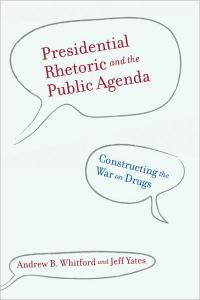From the NYTimes – How well do you really know the candidates?
1. Mitt Romney’s real first name is:
A) Mitten
B) Joe-Bob
C) Willard
2. Asked to name his most prized possession, Fred Thompson picked his:
A) Winchester rifle
B) Trophy wife
C) Autographed picture of Ronald Reagan
3. Which Temptations song did Maya Angelou invoke in a recent radio ad for Hillary Clinton?
A) “Ain’t Too Proud to Beg”
B) “Treat Her Like a Lady”
C) “My Girl”
D) “The Girl’s Alright With Me”
4. Looking wistfully at the candidates running to replace him, George W. Bush said he liked everything about campaigning for president except:
A) Homesickness for favorite pillow
B) Getting viruses from the press corps
C) The awesome responsibility of preparing to govern the most powerful nation on earth
5. During the campaign, Barack Obama learned that Dick Cheney is:
A) His worst nightmare
B) A distant cousin
C) Not really a bad guy once you get to know him
6. Speaking at a livestock auction barn in Iowa, Hillary Clinton said she expected voters to inspect her, and offered:
A) “You can look inside my mouth if you want.”
B) “You can take a gander at my withers.”
C) “You can examine the stock I came from.”
7. Ratcheting it up in New Hampshire, Romney charged Giuliani with being:
A) A person in a glass house who throws stones
B) A rolling stone who gathers no moss
C) A twice-divorced, thrice-married ferret-hater
8. Giuliani retorted that Romney was:
A) A person in a glass house who throws stones
B) A rolling stone who gathers no moss
C) A flip-flopping ferret lover
9. Somewhere along the line, reporters have noticed, Hillary Clinton dropped:
A) Bill
B) The Celine Dion theme song
C) The black pantsuit
10. Texas Gov. Rick Perry endorsed Rudy Giuliani by comparing him to:
A) A great stallion with one sore hoof
B) A pickup truck with one undesirable option
C) A great date with bad breath
11. BEYOND BARBRA AND OPRAH: Match the candidate with the celebrity backer.
A) “Nature Boy” Ric Flair
B) Kevin Bacon
C) Forest Whitaker
D) The Osmonds
E) Melissa Gilbert
F) Merle Haggard
G) Red Sox pitcher Curt Schilling
H) Pat Sajak
I) Sean Penn
1) Hillary Clinton
2) Barack Obama
3) John Edwards
4) Rudy Giuliani
5) Dennis Kucinich
6) Mike Huckabee
7) Fred Thompson
8 ) John McCain
9) Mitt Romney
12. When asked if he ever inhaled, Barack Obama said:
A) “I’m not going to talk about what I did as a child.”
B) “That depends on what the definition of inhale is.”
C) “That was the point.”
13. In Iowa, John Edwards drives:
A) The Man-of-the-People Express
B) The Main Street Express
C) A beat-up sedan formerly owned by his father, the millworker.
14. Among the special interest groups running political ads in Iowa were two nursing associations that said that if Dick Cheney “were anyone else, he’d probably:
A) … be having Christmas dinner alone.”
B) … be dead by now.”
C) … be under indictment.”
15. Mike Huckabee compared his fast rise in the polls to:
A) The miracle of the loaves and the fishes
B) The parting of the Red Sea
C) The battle between Chuck Norris and David Carradine in “Lone Wolf McQuade”
16. In speeches for his wife, Bill Clinton makes fun of the idea that Hillary had a plot to become president that boiled down to:
A) Save Arkansas, then the nation, then the world.
B) Go to a state I’ve barely seen and marry some pale politician who has a $26,000 salary and a $42,000 debt.
C) Help Bill into the White House, endure endless crises and unimaginable embarrassment. Then it’s my turn.
Answers below the fold….
Continue reading →
















 Enik Rising Blog (ER) has an insightful
Enik Rising Blog (ER) has an insightful 


You must be logged in to post a comment.